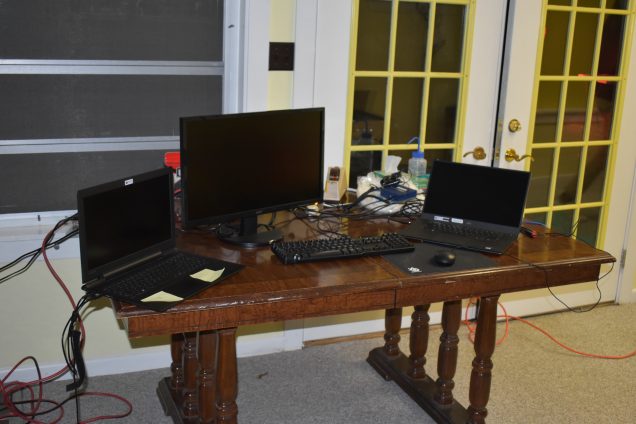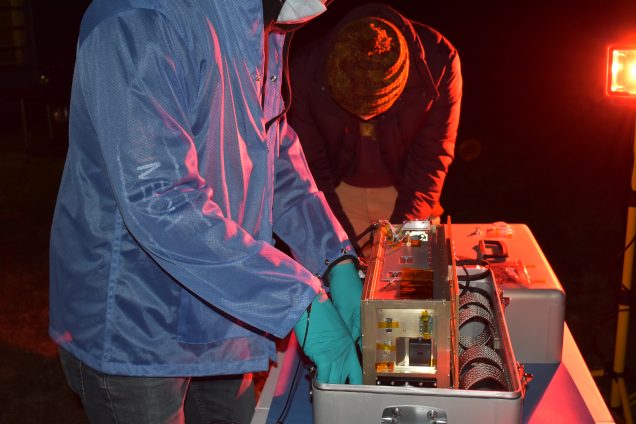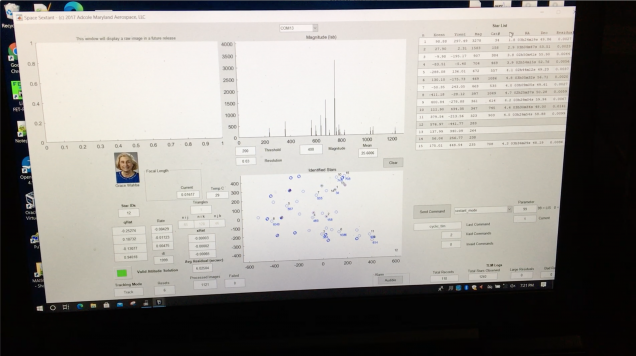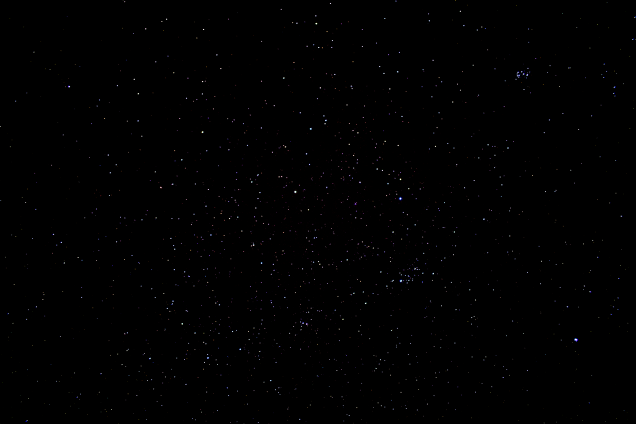Star tracking in the winter in Boston
Like many spacecraft, CuPID uses a star tracker to identify its pointing or attitude. The star tracker uses a catalog of stars and compares with observations of measured star patterns to identify pointing at a given moment in time.
After a brief failed attempt at viewing through the light pollution from the top of the Photonics building on campus in the middle of Boston, we sought a new venue outside the city. The next stop was the dark backyard of a team member’s home a few miles outside the city with a wide view of the sky.
Once we found a clear (but cold!) night the we packed up the spacecraft and test equipment then drove out to the new test site in Groveland, Mass.

Our Test Bench ground station recreated on site
After setting up a living room test control room, the spacecraft was setup outside and CuPID was ready to go. A useful design feature of CuPID’s custom transport case, is that the star tracker can view the sky without fully removing the spacecraft from the housing. As the sun dipped below the horizon and the stars came out shortly after 6pm, we began making measurements.

Setting up CuPID on a dark chilly night
The goal for this initial test was to confirm CuPID could observe stars, track and reference with the star catalog, and provide a solution. With these components CuPID will be able to orient itself while in orbit. The test was a success!! CuPID both saw stars and provided pointing solutions through the flight computer rapidly as the spacecraft was articulated. The team continues to work through data collected in the testing to confirm the results. Also during the test we set up our DSLR camera to take a picture of one area of sky CuPID was pointed at. A beautiful night sky and evening for an experiment.

Output of the CuPID star tracking software with CuPID seeing stars!

Image of the night sky taken with the DSLR

